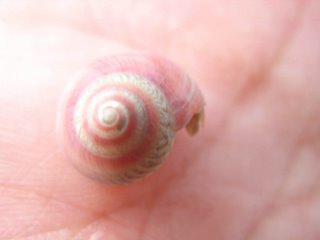Nature's Best
Hallo hallo!
Welcome to Everything's Natural and for a kickstart, I'm going to introduce some of the beauties of nature that are alot neglected by us city folks. Flee and me (Twisstii) and the rest of the silent crew had the opportunity to visit one of the most wonderfully populated and yet isolated beach spending a few inspiring moments with the residents on the beach.Here's a warm welcome....

Carpet Anemones
Carpet Anemones (Order Actiniaria, Stichodactyla) are very much similar to jellyfishes and corals. Found in various sizes, on the sandy and coral populated areas, they feed on microscopic particles trapped onto their "brocolli- like" bodies. Occasionally, they also feed on any unfortunate animal that ventures into their stinging tentacles. During the trip, silent crew no.1 even noticed a parts of a crab half devoured.. poor soul. They also come in a variety of colours, from amazing lime green to violet.During low tides, oral disk in the middle of the anemone reduces in size and retains water to minimise the area exposed.

Peacock Anemones

Peacock Anemones( Order Ceriantharia, Family Cerianthidae) have long and short tentacles that are exposed during low tides. These tentacles are also the means of sourcing for food,gathering food from the water towards the mouth in the centre. The Peacock Anemone does not have an anus (no joke..) therefore any unwanted food is gotten rid of through the same mouth as well. Like Carpet Anemones, they also come in dazzling palette of colours.
Sea Stars

Sea Stars(Class Asteroidea) stay very well camouflaged in the sands of the beach, therefore one has to be really cautious when setting foot on particular areas. Sea Stars are symmetrical along five axes, using "tube" like feet to walk and breathe. Their bodies are made up of tissues which properties changes at will. Like the lizard, they are able to drop off part of their arm to escape their predators. They feed on particles of waste or dung and even mussels, spreading their stomach out of their mouths.
Button shell

Button shells are found buried in the sand, only reaching out its eyes and tentacle to forrage for food. When disturbed, these small but mighty shells gives a spiralling leap and buries itself into the sand again. Empty shells are also popular hangout places of hermit crabs, providing them with a safe and secure home away from predators.

Like all good things that have to come to an end, Mother nature presented to us a breathtaking view of the sunset...till next time!
Welcome to Everything's Natural and for a kickstart, I'm going to introduce some of the beauties of nature that are alot neglected by us city folks. Flee and me (Twisstii) and the rest of the silent crew had the opportunity to visit one of the most wonderfully populated and yet isolated beach spending a few inspiring moments with the residents on the beach.Here's a warm welcome....

Carpet Anemones
Carpet Anemones (Order Actiniaria, Stichodactyla) are very much similar to jellyfishes and corals. Found in various sizes, on the sandy and coral populated areas, they feed on microscopic particles trapped onto their "brocolli- like" bodies. Occasionally, they also feed on any unfortunate animal that ventures into their stinging tentacles. During the trip, silent crew no.1 even noticed a parts of a crab half devoured.. poor soul. They also come in a variety of colours, from amazing lime green to violet.During low tides, oral disk in the middle of the anemone reduces in size and retains water to minimise the area exposed.

Peacock Anemones

Peacock Anemones( Order Ceriantharia, Family Cerianthidae) have long and short tentacles that are exposed during low tides. These tentacles are also the means of sourcing for food,gathering food from the water towards the mouth in the centre. The Peacock Anemone does not have an anus (no joke..) therefore any unwanted food is gotten rid of through the same mouth as well. Like Carpet Anemones, they also come in dazzling palette of colours.
Sea Stars

Sea Stars(Class Asteroidea) stay very well camouflaged in the sands of the beach, therefore one has to be really cautious when setting foot on particular areas. Sea Stars are symmetrical along five axes, using "tube" like feet to walk and breathe. Their bodies are made up of tissues which properties changes at will. Like the lizard, they are able to drop off part of their arm to escape their predators. They feed on particles of waste or dung and even mussels, spreading their stomach out of their mouths.
Button shell

Button shells are found buried in the sand, only reaching out its eyes and tentacle to forrage for food. When disturbed, these small but mighty shells gives a spiralling leap and buries itself into the sand again. Empty shells are also popular hangout places of hermit crabs, providing them with a safe and secure home away from predators.

Like all good things that have to come to an end, Mother nature presented to us a breathtaking view of the sunset...till next time!


0 Comments:
Post a Comment
<< Home